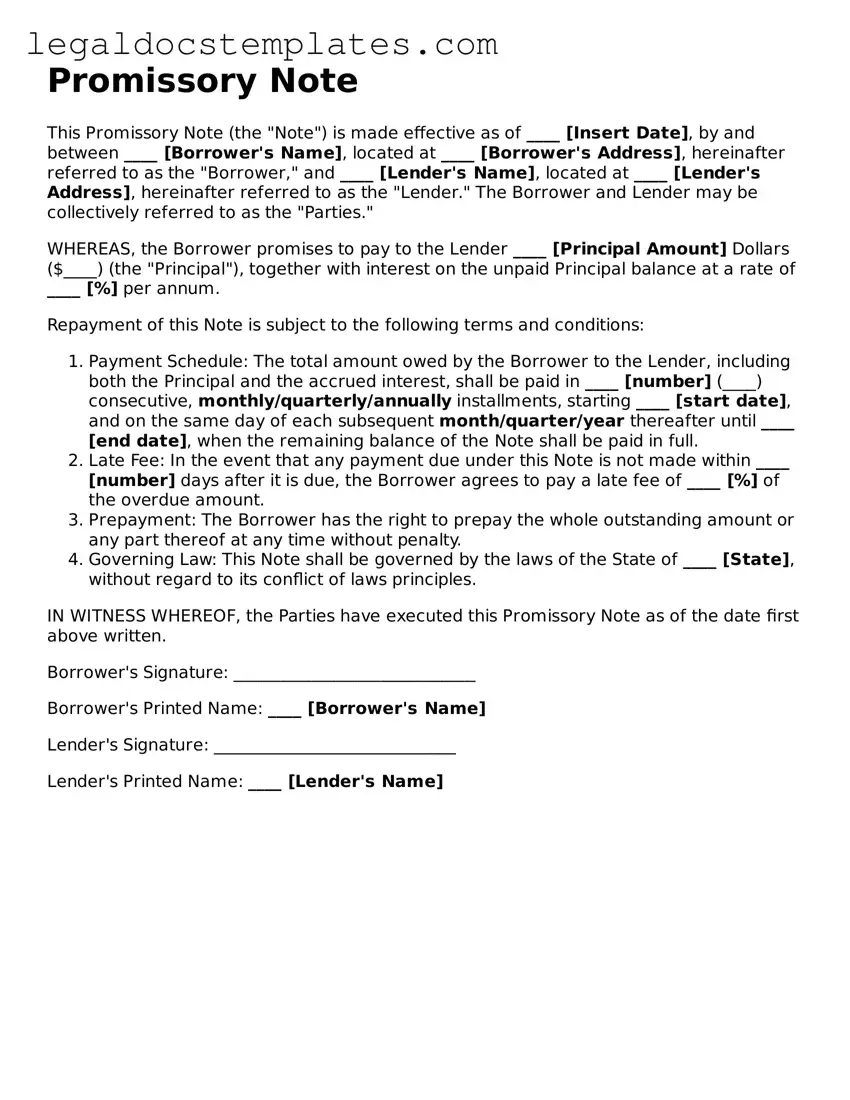One of the most common mistakes people make when filling out a Promissory Note form is leaving blanks in the document. This can introduce ambiguity about the terms or lead to disputes over the intentions of the parties involved. Every space in a Promissory Note designed for information should be filled out clearly and completely. If a section doesn't apply, it's wise to mark it as "N/A" (not applicable) rather than leave it empty.
Another error is failing to specify the payment terms in clear detail. This includes the repayment schedule, interest rate, and maturity date. Vague terms can lead to misunderstands and legal disputes. It's crucial for all parties involved to understand when payments are due, how much is due at each payment, and under what conditions the terms might change.
Often, individuals neglect to outline the consequences of default. A Promissory Note should clearly state what constitutes a default and the repercussions for failing to meet the terms of the note. This includes late fees, acceleration of the debt, and legal actions that could be taken. By clearly outlining these terms, both parties understand the seriousness of the agreement.
Many forget to include a clause regarding amendment procedures. Over time, the conditions initially agreed upon in the Promissory Note might need adjustment or modification. Without a clear clause specifying how changes can be made to the agreement, making any adjustments could become legally challenging.
Signing the document without witnesses or a notary is another frequent oversight. Depending on state laws, having the signature notarized or witnessed can add an extra layer of legal protection and authenticity to the document, helping to prevent disputes about its validity.
Individuals sometimes misunderstand the importance of the interest rate specified in the Promissory Note. Setting an interest rate that is too high can inadvertently violate usury laws, leading to penalties or making the note unenforceable. Thus, it's imperative to ensure the interest rate is compliant with state regulations.
Another mistake is ignoring state-specific legal requirements. Each state can have unique laws affecting the enforceability of Promissory Notes, including necessary legal language or specific disclosures. Failure to adhere to these regulations can render the note invalid or unenforceable.
A common error is using generic forms without customizing them to the specific situation. While generic forms can provide a good starting point, each Promissory Note should be tailored to the particular details of the loan, including the parties involved, the amount lent, and the repayment terms.
Lastly, parties often neglect to have copies for each party. Each party involved in the Promissory Note should have a signed copy of the document for their records. This ensures that everyone has access to the agreed terms and can refer back to the document if any questions or disputes arise.
